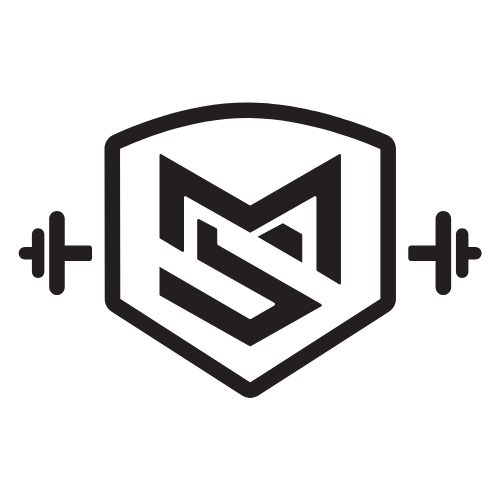How To Choose The Right Shoes For Your Workout
Step Up Your Game: How to Choose the Right Shoes for Your Workout
Ever finish a workout and wonder why your knees or feet ache? You’re not alone!
Years ago, I wore my old runners for everything—until I realized my shoes were actually holding me back.
As your coach, I want to help you avoid the same mistake and keep you moving pain-free, confident, and strong.
Why Shoes Matter More Than You Think
Your feet are your foundation. The right shoes can:
Absorb impact and protect your joints
Help you maintain proper form
Boost performance and confidence
Reduce pain, fatigue, and risk of injury
The Science: Shoes & Injury Prevention
Did you know inappropriate footwear is a leading risk factor for exercise-related injuries?
Research published in the British Journal of Sports Medicine shows that worn-out or ill-fitting shoes can increase the risk of overuse injuries like plantar fasciitis, shin splints, and knee pain (Richards et al., 2009)[1].
But here’s something many people don’t realize:
Wearing the wrong shoes can actually cause your body to overcompensate. When your feet aren’t properly supported, your body tries to “make up” for it—changing the way you walk, stand, or move during a workout. Over time, this can throw off your alignment, lead to muscle imbalances, and increase your risk of aches, pains, and injuries both in and out of the gym (Nigg et al., 2015)[2].
What Shoe for What Workout?
Running Shoes: Cushion & Support for Cardio Lovers
Purpose: Designed to absorb shock and protect your joints during repetitive, high-impact movements like running or brisk walking.
Features to Look For: Good arch support, lightweight, breathable material, ample cushioning (especially if you have joint concerns or run on hard surfaces)
Mia’s Tip: If you want more for your buck and expert advice, I trust Running Free (708 Denison St, Markham, ON). Their staff know their stuff and can help you find the right fit for your feet and goals.
Why it matters:
Proper running shoes can significantly reduce the stress on your knees and hips, helping to prevent injuries like runner’s knee and stress fractures (Hreljac, 2004)[3].
Lifting Shoes: Stability for Strength
Purpose: Built for heavy lifting—think squats, deadlifts, and overhead presses—where balance and a solid base are crucial.
Features to Look For: Flat, non-compressible sole (for better force transfer and stability), secure fit (so your foot doesn’t slide), slight heel lift if you need extra ankle mobility
Why it matters: Lifting in soft, squishy shoes can throw off your balance and limit your strength. Research found that lifters wearing shoes with elevated heels and firm soles produced more power and maintained better posture during squats (Sato et al., 2012)[4].3.
When Is It Time to Replace Your Shoes?
You see worn-out treads or your shoes feel “flat”You notice new aches or pains after workouts.
The shoes are over 6–12 months old (with active use)
The upper is stretched, torn, or doesn’t support your foot anymore
Tip: The American Academy of Podiatric Sports Medicine recommends replacing running shoes every 500–800 kilometers (300–500 miles), or every 6–12 months for active users[6].
Coach Mia’s Shoe Shopping Tips:
Shop late in the day—your feet swell naturally, so you’ll get a truer fit.
Bring your workout socks (the ones you actually wear to train)
Don’t just go by size—try on, walk, and jump around in the store
Prioritize fit and comfort over brand or looks
Ask for expert help (the right store makes all the difference!)
At Motivated Strength Fitness, we believe fitness should fit your real life—not the other way around. That’s why I’m here to help you find solutions that work for YOU, whether it’s the right shoes, the right program, or the right amount of support.
Not Sure What You Need? Email us at hello@motivatedstrengthfitness.ca or bring your current workout shoes to your next session. I’m happy to check them out and recommend what’s best for your goals and body.
Let’s keep you moving pain-free and confident—inside and outside the gym!
See you (and your feet) at your next workout,
Coach Mia
P.S. Want to book a consultation or learn more about our programs? Book here: https://www.motivatedstrengthfitness.ca/contact-us or DM @motivatedstrengthfitness on Instagram.
Store Recommendation: For running shoes, visit Running Free at 708 Denison St, Markham, ON.
References:
Richards, C.E., Magin, P.J., & Callister, R. (2009). Is your prescription of distance running shoes evidence-based? British Journal of Sports Medicine, 43(3), 159–162. Link
Nigg, B.M., Baltich, J., Hoerzer, S., & Enders, H. (2015). Running shoes and running injuries: mythbusting and a proposal for two new paradigms: ‘preferred movement path’ and ‘comfort filter’. British Journal of Sports Medicine, 49(20), 1290–1294. Link
Hreljac, A. (2004). Impact and overuse injuries in runners. Medicine & Science in Sports & Exercise, 36(5), 845–849. Link
Sato, K., Fortenbaugh, D., & Hydock, D.S. (2012). Kinematic changes using weightlifting shoes on barbell back squat. Journal of Strength and Conditioning Research, 26(1), 28–33. Link
American Orthopaedic Foot & Ankle Society. (2023). Athletic Shoes. Link
American Academy of Podiatric Sports Medicine. (n.d.). Shoe Recommendations.


